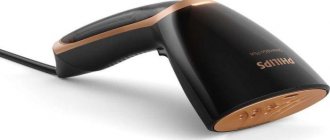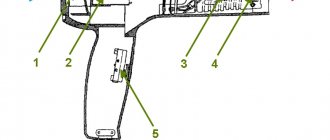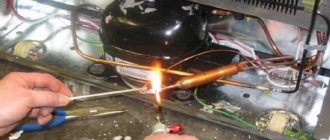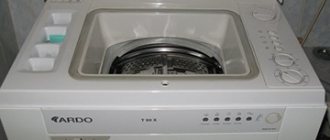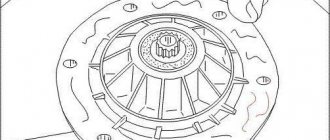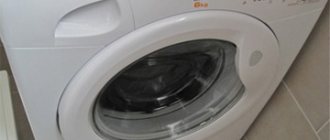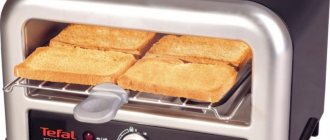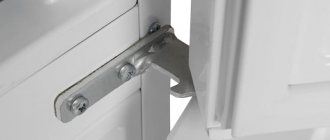Clothing is an attribute of every person's life. It reflects an individual’s lifestyle, his social status and serves as a means of self-expression. In modern society, clothing is produced using special equipment that greatly simplifies human labor - sewing machines. A sewing machine cannot operate without failure all the time. Like any mechanism, it needs care, adjustment, lubrication, and sometimes repair. Repairing a sewing machine in case of minor malfunctions can be done independently. However, there are problems in which only a repair shop can bring the sewing machine back to life. Let’s try to figure out in which cases it is possible to repair sewing equipment at home, and in which cases it is necessary to seek help from professionals.
Industrial sewing machine: repair
An industrial sewing machine is mainly purchased by companies or people professionally engaged in tailoring. A special feature of industrial sewing machines is the presence of a table, an electric drive and a lamp. It is better to trust the repair of modern industrial sewing machines to qualified specialists in order to avoid additional problems when repairing them yourself. If the problems are minor or there is no opportunity or means to contact a professional, the instructions for repairing an industrial sewing machine will come to the rescue.
When starting to repair industrial sewing equipment, it is necessary to adjust the moment when the needle meets the nose of the shuttle. The implementation of this setting comes down to the following: you need to lift the needle plate and presser foot, and then clean everything with a special brush from the debris and dried oil that has accumulated over time. If necessary, use magnifying tools, the simplest of which is a magnifying glass. Next, reduce the tightening force of the shuttle fastening screws to such a state that the shuttle rotates around the axis with difficulty. The next step, using your right hand, quietly turn the sewing machine flywheel towards you, and using your left hand, hold the shuttle so that its nose is stably positioned on the axis of the needle, and the needle enters the bobbin holder hole to the very bottom. Next, rotating the handwheel, lift the needle up 1.8-2.0 mm. The first value of this interval is calculated for sewing products of fine fabrics, the upper one, respectively, for coarser ones. To make it easier to find this value, you can use a marker to mark the distance on the needle bar with a dash. After the distance has been found, raise the needle 1.8-2.0 mm from its lowest position and maintain this position. At the same time, slowly move the tip of the hook towards the needle so that the distance from the upper edge of the needle eye to the lower edge of the hook tip is 1.1 mm. This interval may be slightly increased, but in no case reduced.
Based on the adjustments described above, you need to proceed to the next step in setting up your sewing equipment, which is to set the gap between the nose of the shuttle and the point of the needle when they meet in the amount of 0.05-0.1 mm. It should be noted that the needle should pass at a minimum distance from the nose of the shuttle, but not come into contact with it.
Another important point of the equipment is adjusting the tension of the compensation spring. It happens that this spring is not in the machine at all, or it is there, but does not work. At the same time, the machine itself can function quite normally, without giving the seamstress a reason to worry. However, it is the proper functioning of this spring that allows you to make beautiful stitches, especially on delicate fabrics. To adjust this spring, you need to loosen the tensioner mounting screw and completely remove the tensioner. To avoid problems with reinstalling the tensioner, sketch, photograph or remember how it was assembled. Next, you need to move the spring driver.
Troubleshooting and troubleshooting yourself
The user of the machine can identify and fix a certain number of problems on his own if he understands the principle of operation of the machine.
Attaching the needle bar and tensioner
The most important element in the operation of a sewing machine is the needle. Before you start setting up, you need to check its functioning. During operation, a large load is placed on the needle. She makes a huge number of punctures in the fabric. This results in dulling and bending over time. It is very dangerous for the needle to hit the metal body. This will cause the tip to break immediately. Craftsmen with little experience may not immediately notice the defect. And working with such a needle creates large tears in the fabric.
A thread that is threaded through a broken eyelet will constantly snag, which can lead to deformation of the fabric. Loops may appear in the stitching. Because the needle is bent, the thread may continually break. This makes it difficult to stitch difficult areas where the top thread needs to be kept as tight as possible.
Checking the condition of the needle holder
For your information! In this case, adjustment and repair of the sewing machine is not required. You can fix the problem if you replace the needle yourself. Experts recommend changing this element as often as possible to make the machine work better.
When changing the needle, you must adhere to the following rules:
- The sewing needle should be selected only in exact accordance with the type of equipment. You cannot insert a needle for an industrial device into a household machine. In such a situation, the gap between the nose of the shuttle and the needle blade will be compromised. This will cause skipped stitches. In the worst case, the shuttle may break.
- It is important to position the element correctly in the needle holder. The blade should be on the side of the shuttle nose.
- Before replacing, even a new needle needs to be checked. There should be no distortions on it. This may not be noticed immediately. It is recommended to place the needle on the glass. The location of the curvature will immediately become noticeable.
- The needle should be selected according to the fabric being used. For jeans, stretch or faux leather, you need to choose special needles that allow easier passage through the fabric.
You might be interested in this: Simple patterns and sewing procedures for sheath dresses
The needle must match not only the fabric and machine model, but also the thread number.
It is important to pay attention ! New sewing machines have a certain feature: they have a guide stop that prevents the point from moving to the side.
Needle installation
Setting the interaction between the hook tip and the needle
The quality of the row and stitch depends on the proper settings of the shuttle assembly and the sewing machine needle. The correct values must be set between them. If they are broken, thread breaks, looping, and omissions may occur. To perform the setup correctly, you need to understand the principle of loop formation.
As soon as the needle rises 2 mm, a loop is formed from the upper thread. At this time, the nose of the shuttle should pass close to the hollow of the needle. It is important that this distance is no more than 0.15 mm. And the distance from the eye of the needle and the nose should be 0.5 mm. These parameters apply to working with fabrics of medium thickness.
For your information! It is important to pay attention to the correct installation of the rack. It should be positioned vertically. It is the rail that moves the fabric relative to the needle. As soon as the material is pierced with a needle, the edges of the teeth of the rack should be at the level of the sewing machine work table.
Adjusting the rack of a sewing machine
Vintage sewing machines: repair
Sewing machines “Zinger” (“Singer”), “Podolsk” were once in almost every home. The development of sewing machine design technologies has led to the creation of new equipment that is more powerful and productive. As a result, tailoring has become widespread - it has become possible to buy clothes in stores, for every taste and color. Therefore, they began to forget about the old machines and they were replaced by more modern sewing machines. However, many people still have the founders of modern sewing technology somewhere in the village, in the country house or in the attic. Those in excellent condition are valuable antiques for collectors. However, it is not always possible to find a working antique sewing machine; most often they survive to this day pretty shabby. The repair of an antique sewing machine is determined by the degree of deplorable condition in which it found itself after long-term operation or storage. If the machine was stored in good conditions and cleaned periodically, then there is a chance that a simple lubricant can bring it back to life. If the machine is very tattered and spare parts are lost that are difficult to find, then it is worth weighing the pros and cons of repairing such a machine. But at the same time, antique sewing machines were made, as they say, conscientiously and with good care they can last for many more decades.
Sewing machines: service and repair
By purchasing sewing equipment in stores or from official dealers, you get the opportunity to service your machine in the future, and, if necessary, apply for warranty and post-warranty repairs. Additional maintenance of sewing equipment includes:
— training buyers in the correct use of the machine and all its functionality, can take place in the form of presentations, master classes, videos;
— training clients in the basics of care, cleaning and lubrication;
— an explanation of typical problems that customers can fix on their own (replace the needle, belt drive, adjust the thread tension, adjust the stitches, clean and lubricate the machine, tighten the screws);
— supplying customers with the necessary set of spare parts and consumables (screwdrivers, oilers, needles, etc.);
— installation of software for electronic sewing equipment;
— provision of related products and sewing accessories.
In case of serious breakdowns, for example, a malfunction of the shuttle socket, problems in electrical and electronics, the client will be forced to resort to the services of a service center; if the equipment is still under warranty, then the problems will be eliminated under the terms of the warranty repair. In general, sewing equipment repair service centers perform a wide variety of repairs: from cleaning and lubricating to replacing electronic boards.
Where to get it repaired: average prices in workshops
When choosing a workshop where sewing machines are repaired, it is better to focus on service centers that service the purchased model. In such centers, most often all components are in stock, the client does not have to order them and wait a long time for the work to be completed.
The cost of repair depends on the model and complexity of the breakdown. On average, for a machine of the Veritas, Singer and Janome brands you will have to pay from 800 rubles to 1,500 rubles for a simple breakdown. Repair services for Brother and Jaguar models start at 1,200 rubles.
You might be interested in How measurements are taken for sewing men's trousers and clothing
If we are talking about an industrial sewing machine, its repair can cost 2,000 or more. Repairing older sewing machines can be difficult due to the lack of spare parts. This may increase the waiting time.
Choosing a repair service
Sewing machine motor repair
The engine of sewing equipment is its most important part. In the event of a breakdown, you will have to pay significant amounts of money to repair or replace the engine, taking into account the cost of the technician’s services, which in total can amount to almost half the cost of a new machine. The motor of modern sewing equipment is represented by an electric motor, which also sometimes breaks down. However, if the engine does not start, do not immediately blame it for the problem. The problem may be a malfunction of the pedal, oxidation of the connection contacts, wiring failure, etc. It is almost impossible to make significant repairs to an electric motor at home with your own hands. Since the sewing electric motor operates from a 220-volt electrical network, you should not disassemble the motor yourself and try to repair it; it is better to entrust this task to electricians. It is better to immediately take electronic sewing machines to a specialized workshop.
You can actually change the brushes and electric drive on your own. The need to replace old brushes with new ones can be determined by turning off the lights in the room and working for a while without light. If the engine sparks or makes a crackling sound, it is time to change the brushes, which can be purchased at service centers or sewing equipment stores. Usually the brushes are easy to get: you need to unscrew the fixing washers with a screwdriver. However, in almost all Soviet cars the brushes are located inside the electric motor housing.
Repairing a sewing equipment motor most often means replacing it. However, buying a new electric motor can be a serious problem, since modern cars do not have a uniform standard for mounting for an electric drive, which cannot be said about old Soviet ones. Therefore, it would be more correct to contact the service center of the manufacturer of your particular sewing machine. Firstly, they will select the ideal engine and pulley, and secondly, set up the settings for turning on the machine and lighting the workplace.
In order for the electric motor to work for a long time and properly, it is necessary to follow the work and rest modes that are prescribed in the operating rules for household sewing machines. Otherwise, the electric motor will overheat, the wires will melt, and eventually become exposed, which will ultimately lead to a short circuit and complete failure of the motor. Industrial sewing equipment has a different engine structure and more powerful fans, so it can work for a long time without rest. Another useful tip - do not leave the sewing equipment plugged in for a long time; always unplug it from the outlet, because although the machine will not work, voltage will still be supplied to the electric drive.
Sewing machine repair tools
Mechanics who repair sewing equipment have a decent arsenal of tools and equipment for carrying out repairs. Among them: keys, awls, wire cutters, staples, duckbills, metal rods, needle files, calipers, triangular files, pliers, hammer, cleaning brush, as well as an oiler and spare parts for repairing a sewing machine. As you can see, there are many tools, some of them are in every home. The most important and necessary tools that every seamstress or tailor should have are a screwdriver, pliers, some kind of sanding material, a cleaning bead and an oil can. Everything else can be purchased or borrowed if necessary.
If a breakdown does occur and you need spare parts for your sewing machine, there are repair shops and special sewing equipment stores that offer a wide range of parts: presser feet, bobbin case, thread take-up, motor, thread tension regulator, rack, presser foot lifting mechanism, foot holder, presser foot screw, stitch length adjuster, pedal, needle plate, needles and needle bar. In addition, parts can be ordered in online stores.
Partner starforge.info
Self-Configuration Guidelines
You can set up the device yourself if you follow a certain plan:
- First of all, you need to adjust the springs that lift the threads. They must be twisted in such a way that the wound loop does not unwind, but is held by the bobbin cap.
- It is important to achieve the correct thread tension. For this purpose, the machine has a special mechanism located on the side of the body and in the interlinear screw of the shuttle. To tighten the bobbin thread, you need to tighten the locator screw.
- After setting the thread, you need to check the work on a piece of material. If hanging loops form, the top thread needs to be loosened.
Checking the thread setting
- Next you need to set the presser foot pressure. This is done by adjusting the springs with a special bolt. In most modern models it is located in an accessible place so that it can always be easily adjusted during operation. It is important that the spring is not too overtightened, but not too loose. If the presser foot presses the fabric too tightly against the body surface, it will increase the pressure and may cause the fabric to rip. If the foot, on the contrary, does not clamp the material sufficiently, the seam will turn out sloppy. The presser foot needs to be adjusted every time a new type of material is used. The thicker the fabric, the greater the presser foot pressure.
- Check the operation of the electric drive. Often malfunctions in the functioning of sewing machines occur due to the fact that the speed is incorrectly set. They are set by a special regulator located in the pedal. If the sewing speed is broken, you need to disassemble the pedals, clean them and put them back. If this procedure does not help, you need to replace the contacts in the pedal.
- Check the condition of the needle holder. The needle should be firmly installed all the way, the large groove should be turned to the left.
You may be interested in: Using the Moscow seam for thin fabrics
Before work, you must also set the stitch length. This is the exact value that is set for each type of fabric in accordance with the instructions. The average value is from 1 to 2 mm; if the material is thick, then the parameter can reach 3 mm.
Checking the sewing machine before use

